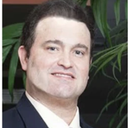Thank you for this great question. I think you are onto something significant but might not have it entirely straight. Let me see if I can clarify. In Florida, doctors are limited to 4 liters of liposuctioned fat. This is not the same as the lipoaspirate. When liposuction is performed, the lipoaspirate is what is removed. This is a combination of viable fat cells, ruptured fat cells, oil, tumescent fluid, blood, etc. The 4L limit refers only the fat portion of that mixture. Total lipoaspirate could be 4-7 liters, but only 4 or less might be fat. There are several surgeons out there that in an effort to achieve "large" BBLs, they transfer the entire lipoaspirate mixture back into the body without purifying it, resulting in a big number in terms of cc's transferred but the bottom line is there is a significant portion of that transfer that is not viable fat. It might look good the day of surgery, or even a few weeks later, but over time, that patient is going to absorb and lose that volume and be unhappy with the result as it fades away. In my practice, I prefer to use the Revolve system to process and purify the fat prior to transfer. This system basically spins and washes the harvested fat to remove all of the things you do not want and leave you with high-quality, viable fat to transfer. This might result in a "smaller" BBL on the day of surgery, but this fat has a much higher rate of survival and I think yields a better, safer, and more predictable end result. The only way you can know what you are getting into is to find a plastic surgeon who is board certified by the American Society of Plastic Surgery and who is committed to honest and ethical practice and safety as the number one priority. Discuss with him or her exactly how they perform the operation and decide who might be the right fit for you.Best of luck!Dallas R. Buchanan, MD, FACSOwner & Board-Certified Plastic SurgeonVIVIFY plastic surgery


